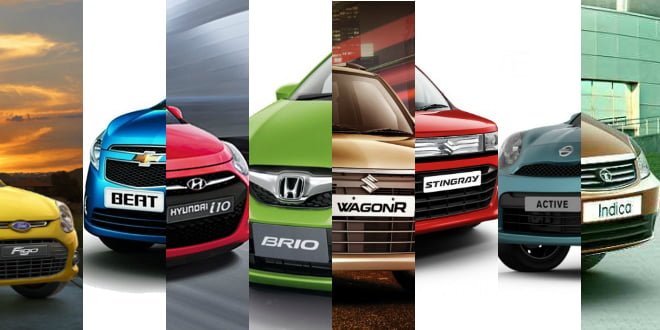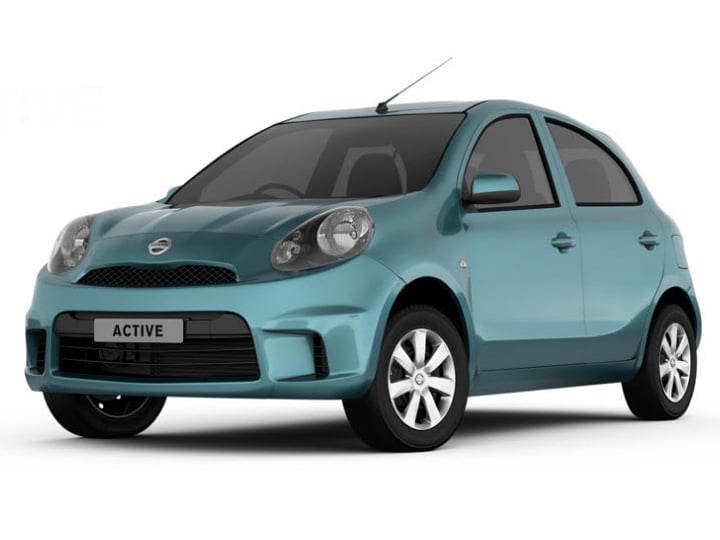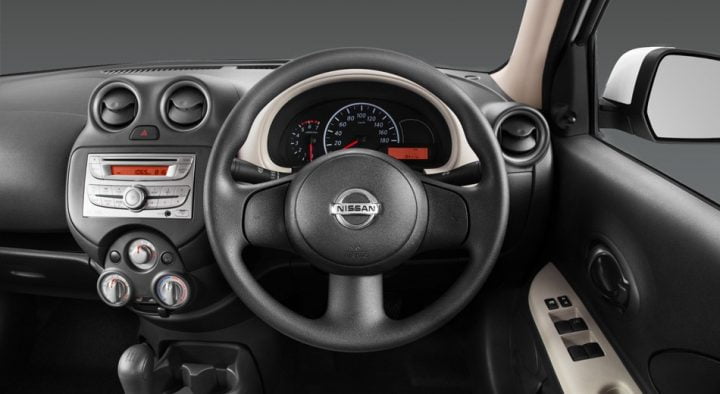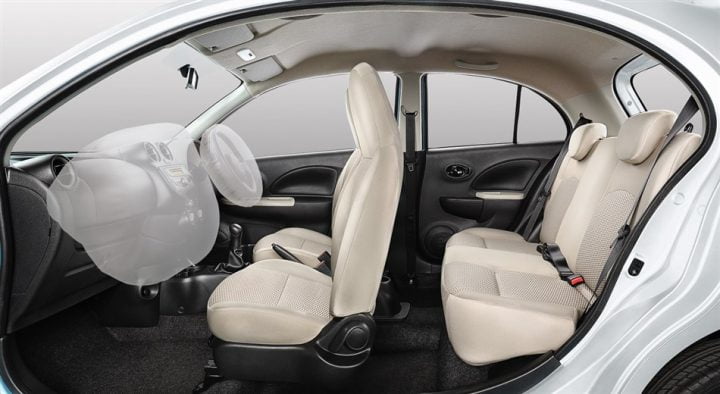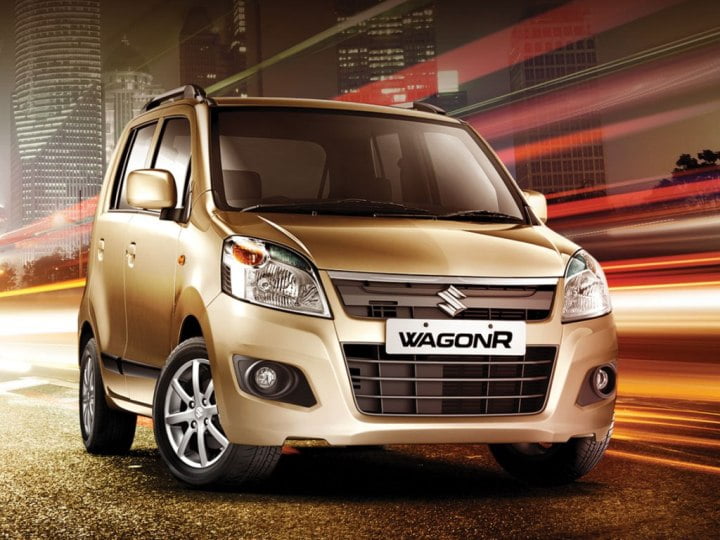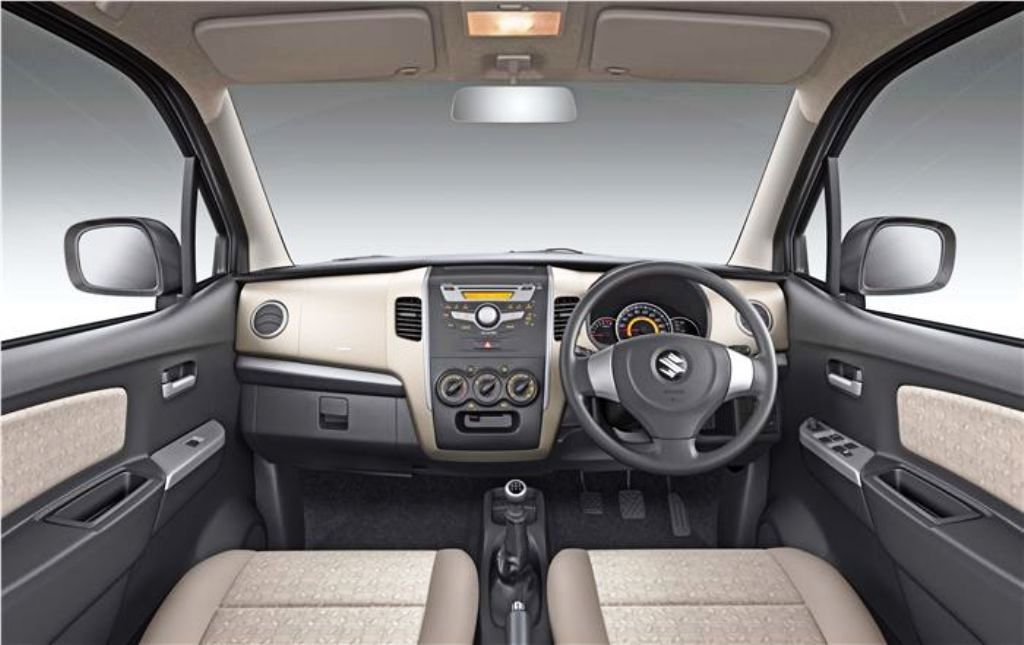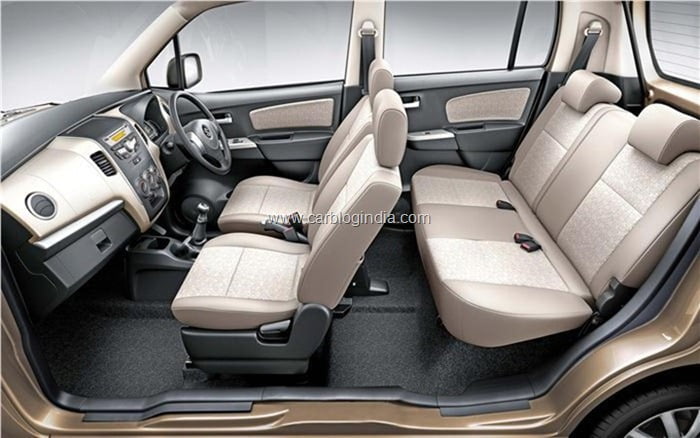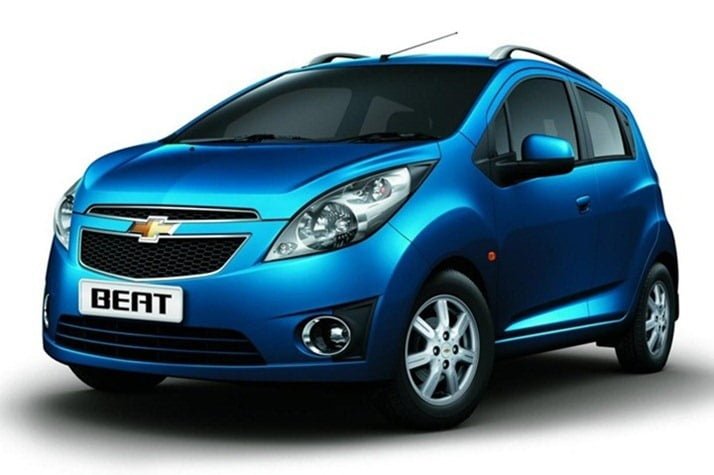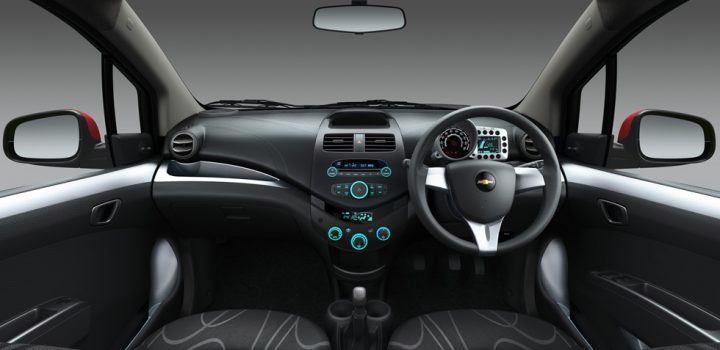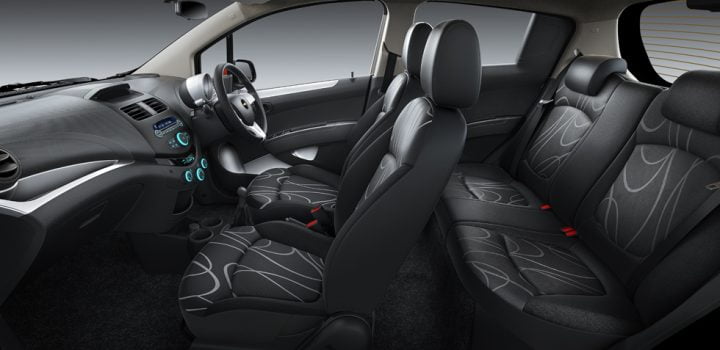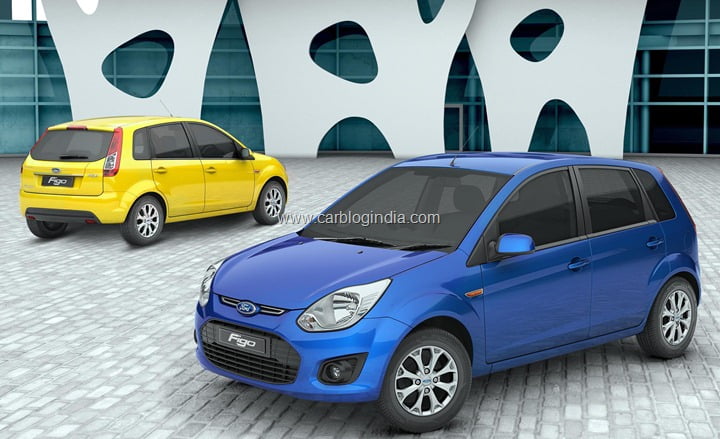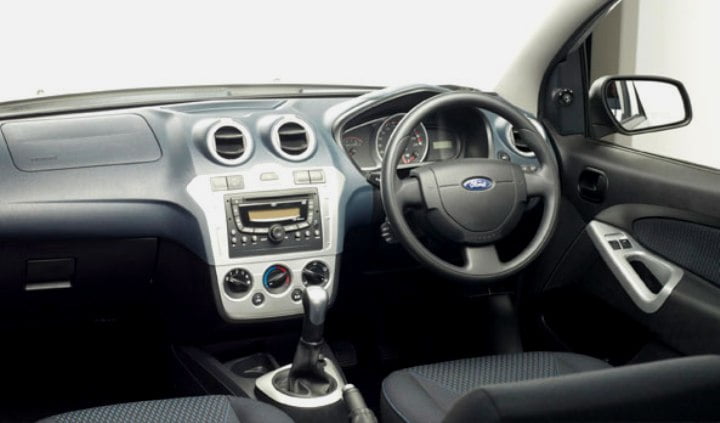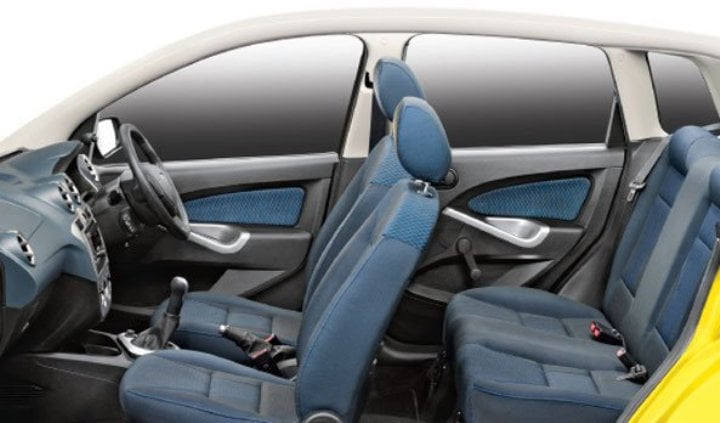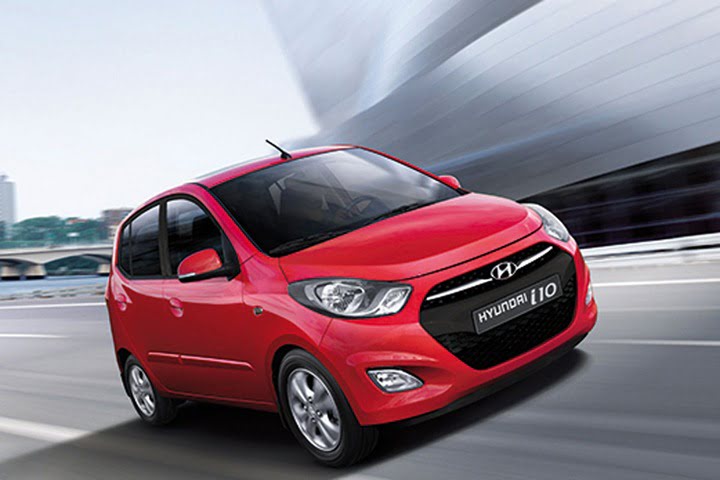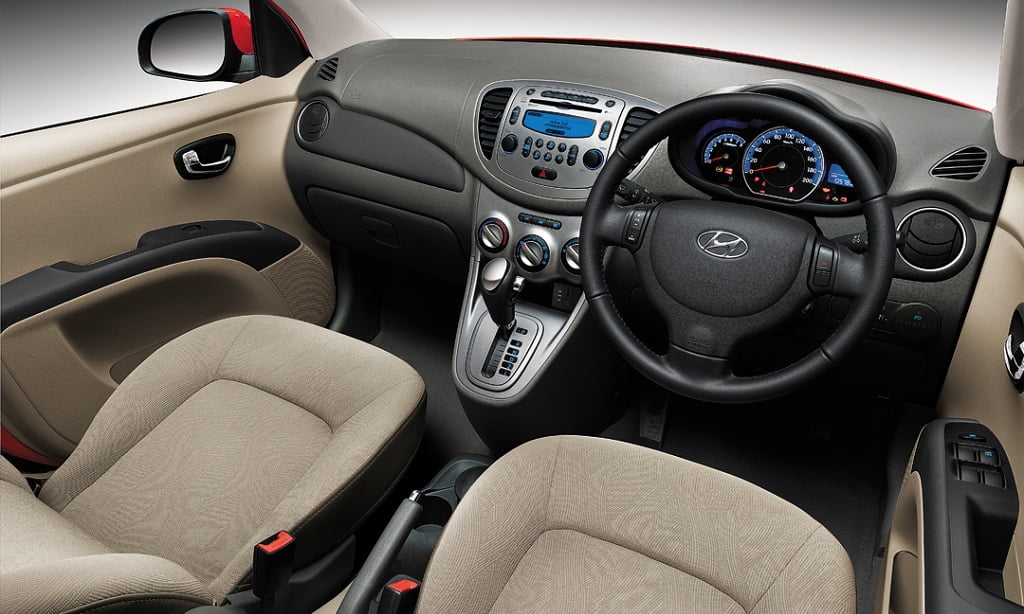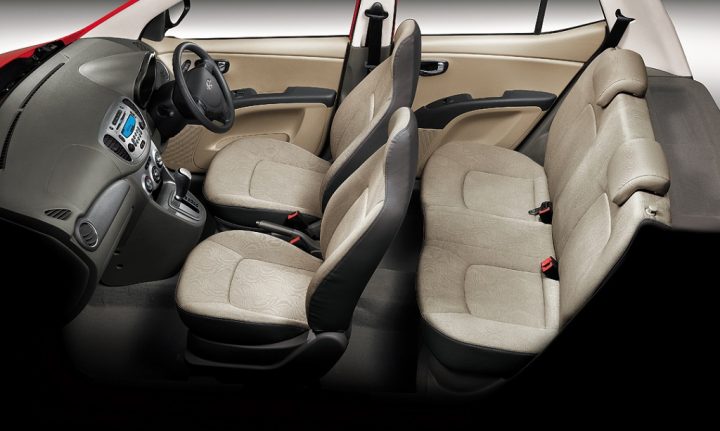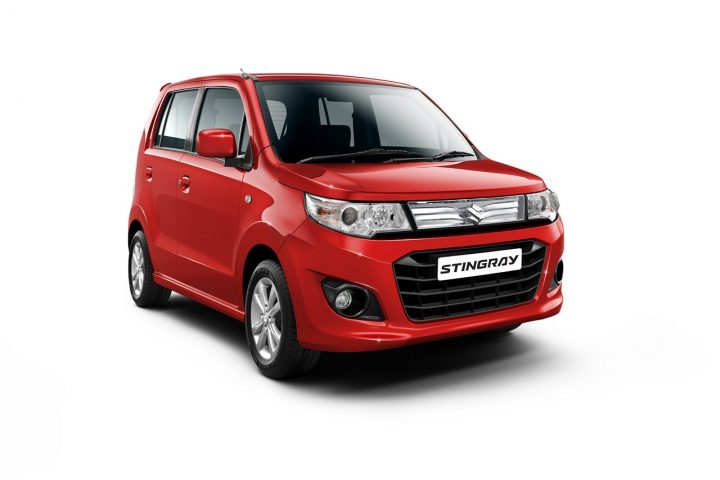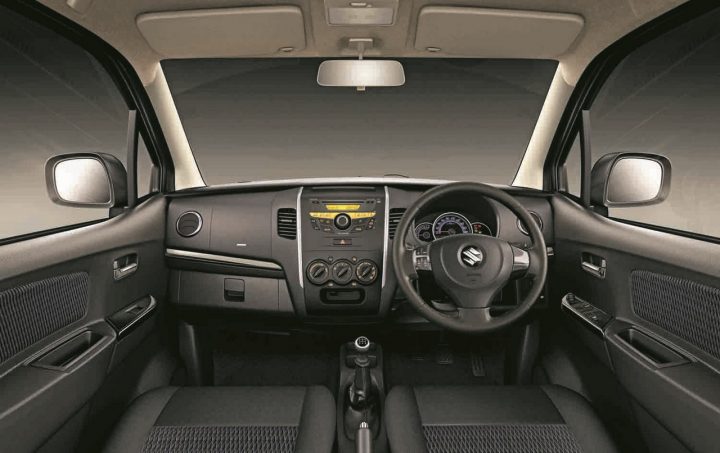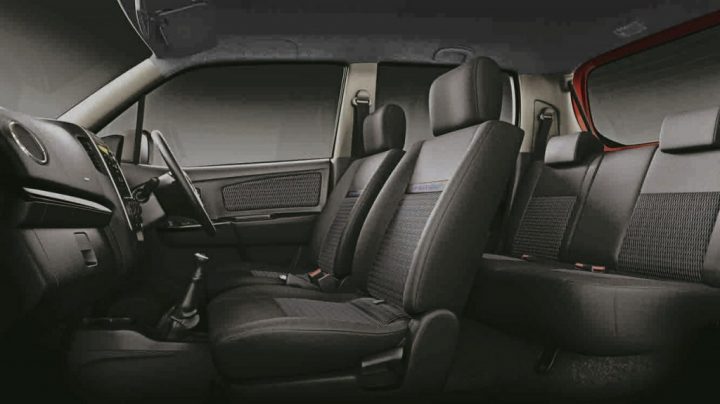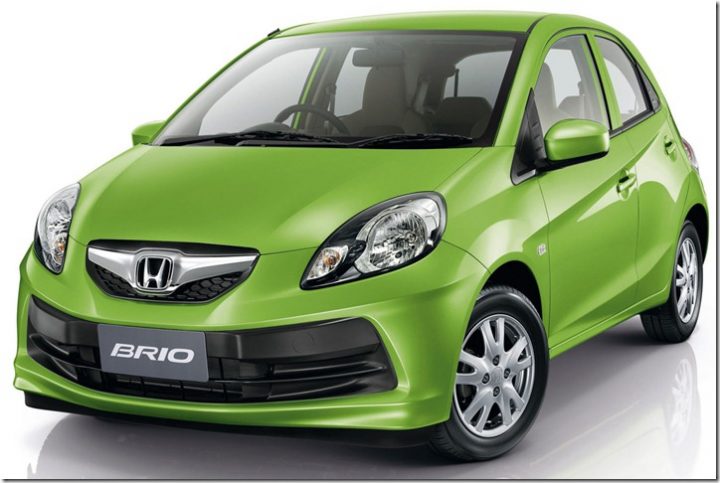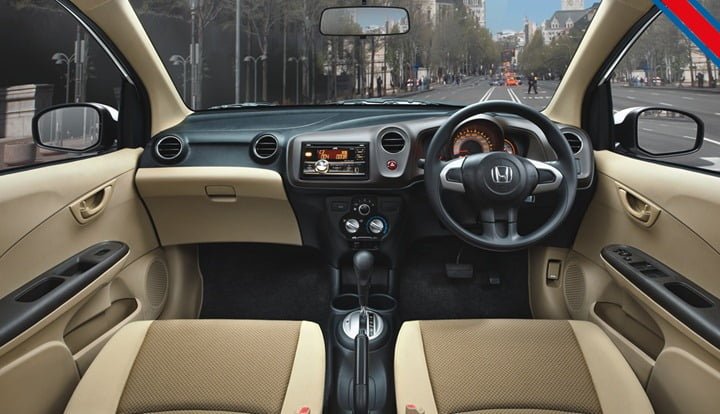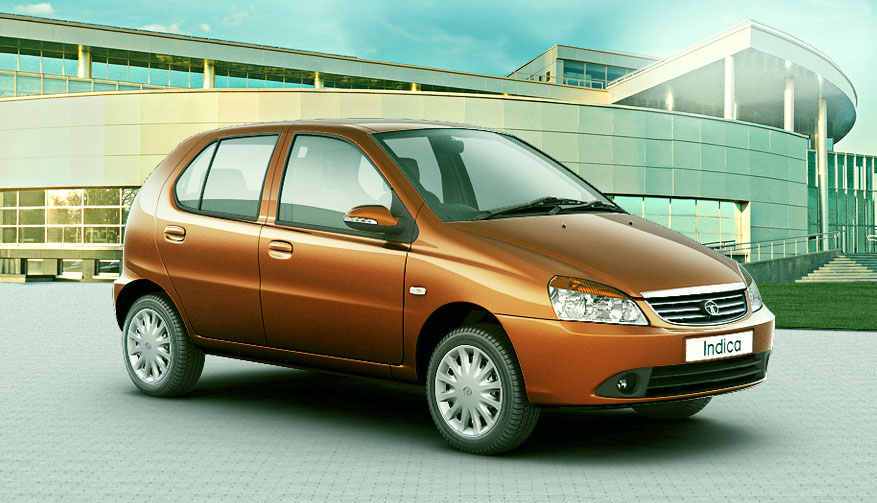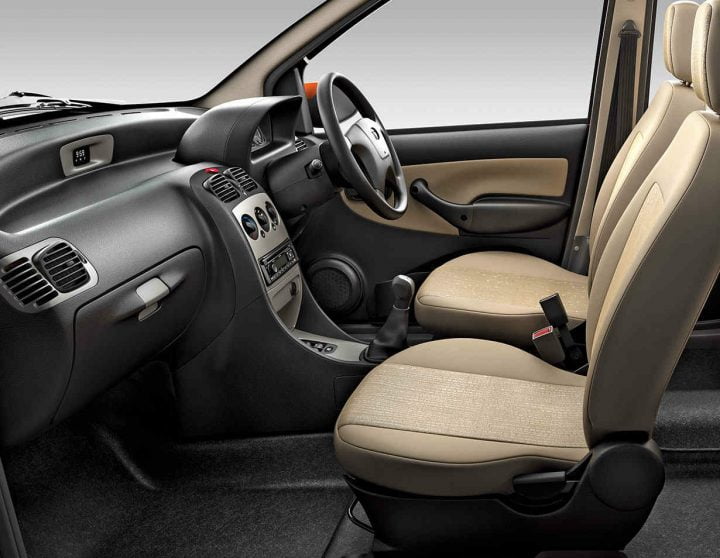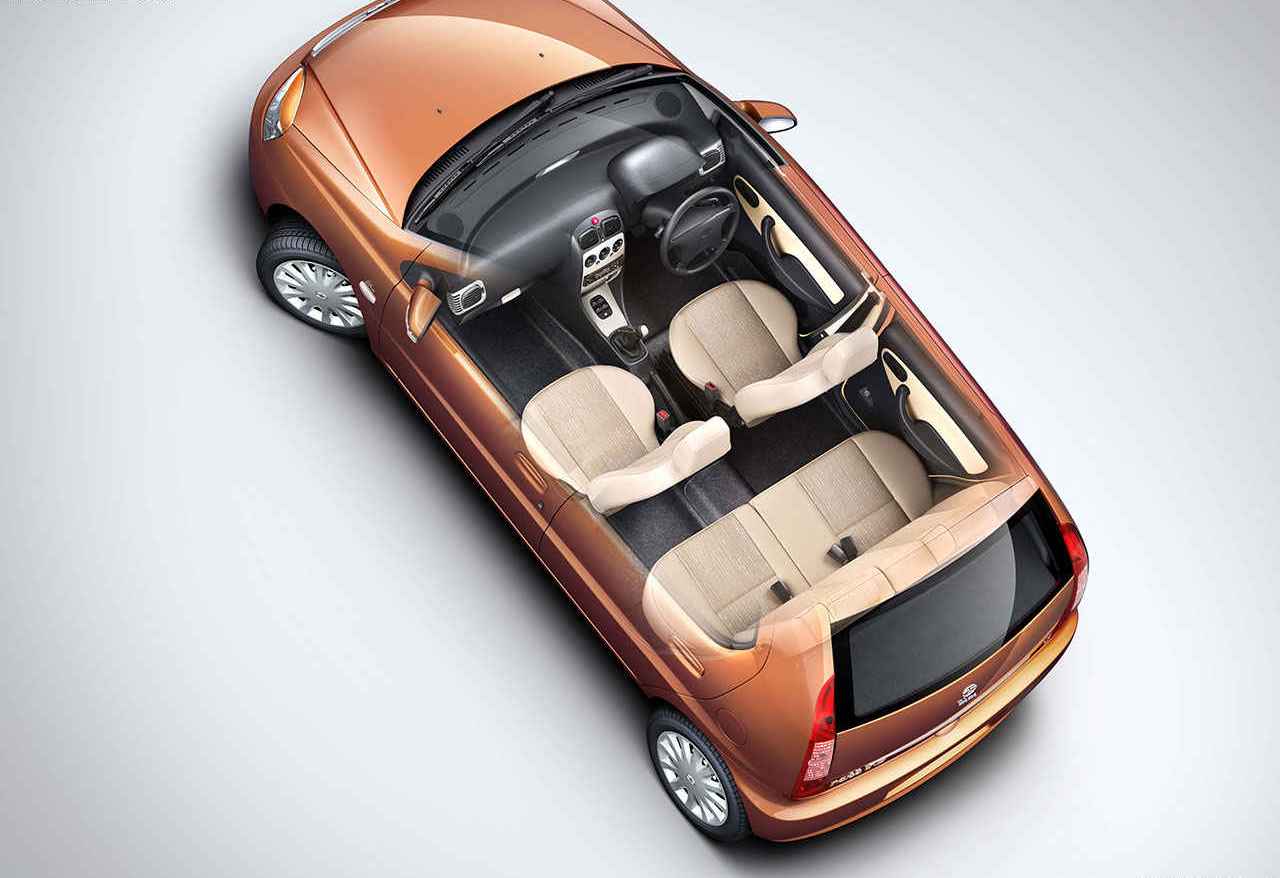For the price range that you’ve selected, the following cars provide a bit more in terms of space, equipment and performance than the entry level hatchbacks. The most popular car category in India, the hatchbacks in this segment offer a premium feel than their entry-level brethren and you are really spoilt for choice. Most of the cars in this segment still cater to those looking for a comfortable small car to potter around the city, but there are some interesting ones here which could appeal to those who love driving too. This is also the segment where you find some foreign brands bringing in their first offerings, taking up the competition a notch higher in terms of quality. Again, you are spoilt for choice.
The cars we are comparing today are the Nissan Micra Active, Maruti Suzuki Wagon R, Chevrolet Beat, Ford Figo, Hyundai i10, Maruti Suzuki Wagon R Stingray, Honda Brio and Tata Indica eV2.
Nissan Micra Active
Price
Rs. 3.50 Lakh to Rs. 4.80 Lakh
Styling
In one sentence: Wait, this looks like that other car….. the old Micra! Nissan is following the footsteps of many other manufacturers in India with the Micra Active, i.e, selling two generations of the same car together. The older car is stripped off some features and sold at a lower price and the newer one gets a higher price tag. When Nissan designed the Micra, they claimed that their studies revealed that people like soft, curvy designs rather than aggressive designs (the same philosophy was used to design the Spark), and hence you get a car that looks very ‘feminine’. There are many who may not like the design much, but it is very inoffensive and will not alienate a lot of people.
The roundish theme continues on the inside, the A/C vents are round, the gear-knob is roundish, the horn on the steering wheel is round, the way the centre console is arranged has a round theme. You get the idea. Again, the deisgn is simple, but the grey plastics do make the interiors look a bit boring. The beige inserts try to liven up the interiors but it is overshadowed by the sea of grey plastics. The cabin is very airy otherwise, the huge windows let in a lot of lights, you would not feel claustrophobic sitting at the rear.
Comfort
When you get onto the driver’s seat the first things you notice is how well you can see around the car. The view for the driver is better than many other cars in this category, you can see the front of the bonnet which makes parking easier, the front pillars are not very obtrusive and the windows are huge. Rear visibility is hampered by the thick C-pillar though. The front seats are very comfortable, and you could travel long distances without much of a discomfort.
Things are not the same at the rear though, the rear seat is surprisingly uncomfortable even though the car is not low on leg-space. The low under-thigh support is to blame, that makes long journeys very uncomfortable. You can fit three people at the back without much of a hassle though, and that is a deal maker for many.
The Micra Active was tuned to be an economical large hatchback and that shows when you drive it. The engine is tuned to deliver better fuel-economy than outright performance, it loses 10 BHP over the last-gen Micra which it is based upon. You will not find its petrol motor s rev happy as it was when it was used in the Micra but its usability in the city has been improved greatly as ,maximum power and torque are produced at a lower range in the rev-band. It can be driven hard but the car will loose steam pretty quickly. The suspension has been tuned for comfort so cannot expect it to be fun to chuck the car around.
Specifications
- Engine: 1.2-litre, 3-cylinder, petrol
- Power: 67 BHP
- Torque: 104 Nm
- Transmission: 5-speed manual
- Mileage (Petrol): 19.49 KMPL
- Range (Petrol): 799 Km
Recommended Variant
[box type=”success” ]Nissan Micra Active XV[/box]
Maruti Suzuki Wagon R
Price
Rs. 3.65 Lakh to Rs. 4.53 Lakh
Styling
In one word: Smart. The Maruti Suzuki Wagon R was first launched in India in 1999 and has since then received facelifts to keep it up do date and to keep it the reckoning in this very crowded segment. It, along with its sibling the Stingray and the Hyundai i10, are the only car in this segment which utilise the ‘tall-boy’ design. It has aged pretty well according to us, the redesigns have been successfully masking the fact that the design of the car basically remained the same for over a decade.
The newest update which was first launched in 2010, made the car more smarter looking than before. The designers were especially helped by the fact that the car grew in length, that helped mask the height of the car to some extent. The designers have also added roof rails, a slightly slanting roof and a longer bonnet to make the car look better when looked at from the side. The huge headlamps, more aggressive grille with a huge air-dam on the bumper make the front look very smart. Move to the side and ther are not many things that’ll catch you eye, it is pretty simple but well put together. Move to the rear and the height of the car is managed by the tall tail-lamps, a fat chrome bar below the rear-windscreen and a contoured bumper.
Move to the inside and the smart design is continued from the outside. The rectangular air-vents, the long centre console and the large dashboard give the front cabin a smart look. The interiors are well put together and different components jell together well. There is plenty of headroom, legroom and the large glass area makes the cabin feel airy. A mix of light and dark upholstery also gives the cabin a very good feel.
Comfort
The ‘tall-boy’ design means that getting in and out of the car is not a hassle for you, even if you are a six-footer, you actually walk into the car than lower yourself into it. The huge, wide-opening doors also help matters. You sit higher in this car than many other cars in this segment, and if you are not too short you get a very good view of the road from the front seats. Shorter drivers may have a problem peering over the rather tall dashboard, and the unavailability of a height adjustable driver seat could complicate matters for them.
The seats are comfortable all around, though seating five people at the back could be a squeeze as the Wagon R is not very wide. The Wagon R has always has been a practical car, it gets dual-gloveboxes in the dashboard, rubber-lined mobile phone holders which stop you phone from moving around, 60:40 rear seats etc.
The Maruti Suzuki Wagon R is not a driver’s car, period. It was meant to be the perfect city car, designed to help you get around the city in comfort, easy to park, easy to get in and out of, versatile but it was never designed to be driven hard. The K10 petrol engine still has a lot of punch iof you want to execute that quick overtaking maneuver or leave from a stop light fast, but the tall design and soft suspension do not help matters in terms of high speed handling.
Specifications
- Engine: 0.9-litre, 3-cylinder, petrol
- Power (Petrol / CNG / LPG): 67 BHP / 58 BHP / 62 BHP
- Torque: 90 Nm
- Transmission: 5-speed manual
- Mileage (Petrol / CNG / LPG): 20.51 KMPL / 26.6 KMKG / 14.6 KMPL
- Range (Petrol / CNG / LPG): 718 Km / NA / NA
Recommended Variant
[box type=”success” ]Maruti Suzuki Wagon R VXi (O)[/box]
Chevrolet Beat
Price
Rs. 3.94 Lakh to Rs. 6.01 Lakh
Styling
In one sentence: Mixed emotions. The Chevrolet Beat is the next-gen Spark. The designers took the ‘cute’ looks of the Spark and replaced it with a much more youthful and sporty design. It was a looker both inside and outside, and people appreciated the design when it was launched in 2009. On the outside, the car gets elongated headlamp units which stretch from the bumper and almost all the way till the front doors. The two-piece grille is well integrated and the steeply raked front bonnet that continues onto the windshield gives the car a wedge shape that looks very ‘cool’. Move to the side and you see that the car has a very cab-forward design that gives it a very dynamic look even when it is standing still. The window line rises dramatically following the line from the front bumper. The signature piece at the side are the hidden rear-door handles, which are placed behind the rear-door windows and as they are painted black they cannot be seen at first glance. Move to the rear and the excitement fades, up-till here the design of the car can be compared to the ones sold all over the world. But in India we get tail-lamps which look as though they have been sourced from the after-market with a lot of cheap chrome garnish. Models sold abroad get smart bumper integrated exhausts, but in India you get the exhaust pipe poking awkwardly from below the bumper. The basic design is still good, but the extra chrome doesn’t look that good.
Move to the inside and the stylish theme is continued from the exterior. The first thing that you notice when you sit on the driver’s seat is the floating instrument cluster behind the steering wheel. It gets a big analogue speedometer while a digital screen beside it shows the rev, trip details, fuel-level etc. The rev-metre especially is very attractive. The Beat gets a simple three-spoke steering wheel, the dashboard gets a digital display for the climate control which is nice, the top half of the centre console is dominated by the media player and it’s controls. The top end of the centre console has an empty space which in international markets houses a multi-information screen, this could have been utilised as the space looks awkward.
The design of the dash and door pads is pretty eye-catching, the black-and-silver upholstery combo looks very attractive, but combined with the low levels of light that enter the cabin thanks to the steeply raked window-line the interiors can easily turn gloomy. The gloominess is especially evident when you sit at the back, visibility out of the rear windows is almost nill thanks to the small windows.
Comfort
This is a small car, let’s not forget that fact. Realistically it can only seat four adults in comfort, the rear seat is not at all spacious for 3 thanks to the width of the car. Chevrolet has also traded in boot space for more legroom for the rear passengers, but even then the rear legroom is just adequate. Though the seats at the rear are comfortable, most people would not be happy sitting at the back thanks to claustrophobic interior conditions.
The front seats are very well built, they are shaped very well and hug almost hug you, which helps in stopping you from sliding off. The seats are a bit low set which might create visibility problems for short drivers. The steeply raked windshield and hence the long A-pillar also block a bit of your view. The view out of the front side windows is pretty good, and the large ORVMs give you a larger view of the back.
The Beat in India is marketed as a good looking city car with two high mileage engines on offer. And it does what it says. The engines, a 1.2-litre petrol and 1.0-litre diesel, are tuned for economy rather than performance, the tyres are skinny and the transmission do not inspire you do anything else other than adopt a more relaxed driving style.
Specifications
- Engine: 1.2-litre, 4-cylinder, petrol / 1.0-litre, 3-cylinder diesel
- Power (Petrol / Diesel / LPG): 79 BHP / 58 BHP / 79 BHP
- Torque (Petrol / Diesel / LPG): 108 Nm / 150 Nm / 104 Nm
- Transmission: 5-speed manual
- Mileage (Petrol / Diesel / LPG): 18.6 KMPL / 25.44 KMPL / 13.3 KMPL
- Range (Petrol / Diesel / LPG): 651 Km / 890 Km / NA
Recommended Variant
[box type=”success” ]Chevrolet Beat LT(O) (Petrol/Diesel/LPG)[/box]
Ford Figo
Price
Rs. 3.98 Lakh to Rs. 6.15 Lakh
Styling
In one word: Understated. The current Ford Figo is facelifted and improved version of the original car which was launched in 2009. The Ford Figo was previously a very understated car, and the update gave it a bit of flair necessary to make it stand out in the crowd. At front you get a large headlamp unit with chrome wrapping around the main-lamp. The larger units serve the dual purpose of catching an on-looker’s eye and more importantly illuminate the road better as compared to the previous car. The headlamps on the Ford Figo are part of Ford’s new ‘Kinetic Design’ treatment, which also includes a large trapezoidal air-intake on the bumper. Move to the side and you see that the kinetic design theme has not been implemented here. It is pretty bare, the only little design element is the small crease that starts from the front wheel arch, continues through the door handles and goes onto the bottom of the tail-lamps. You will notice that the car has pretty large side-windows which should help matters when you get inside. Move to the rear and the design remains understated, the long vertical tail-lamp unit is typical hatchback design and there is not much going on here.
Move inside and the straight forward design from the outside continues. The car gets all black interiors (customers of the top end Titanium variant can go in for a dark blue coloured dash too), which is peppered with silver inserts here and there. The instrument cluster is analogue-digital with easy to read dials and a small digital trip metre. The blue fabric on the seats look nice, but don’t add too much in terms of design.The centre console is all silver, the instruments on it are black and have a orange black-light.
Comfort
Though the interiors of the Ford Figo will not set your heart racing, the quality of the trim and upholstery and the consistent finish will surely make it warm. Then there are the seats, at front they are well bolstered and can be comfortable even on long trips. The rear seats too are very comfortable and there’s enough leg space unless a 6-foot+ person decides to occupy the front seats. Headroom at shoulder room at the rear is also satisfactory, and three average sized adults can sit side-by-side without having their elbows in the other’s ribs. The air-conditioning works very well and on most occasions you do not have to increase the blower speed beyond the first two speeds. A 284-litre boot makes it one of the biggest in the category and the rear seats can fold away almost flat to let you take more stuff if the need arises.
The ride quality of the Ford Figo has to be given a special mention here. Ford cars have always had that ‘just right’ feeling when it comes to their ride quality, it’s not too soft and not too hard. This translates to a fairly comfortable ride over bumpy surfaces, but the car stays flatter than it’s competition during fast highway stints or while being driven in curvy roads. It is one of the only cars in this segment that can be recommended to an enthusiast driver. The only thing that dampens the whole driving experience are the engines. Both the diesel and petrol are low on power, and work best when you do not race them. Though both have excellent city manners in the city, they run out of breath on the highway very easily. Wish Ford had put better engines to complement the excellent chassis and suspension settings the car comes with. Still, it is the best driver-oriented hatch in sale today in its price range.
Specifications
- Engine: 1.2-litre, 4-cylinder, petrol / 1.4-litre, 4-cylinder diesel
- Power (Petrol / Diesel): 52 BHP / 50 BHP
- Torque (Petrol / Diesel): 102 Nm / 160 Nm
- Transmission: 5-speed manual
- Mileage (Petrol / Diesel): 15.6 KMPL / 20.0 KMPL
- Range (Petrol / Diesel): 702 Km / 900 Km
Recommended Variant
[box type=”success” ]Ford Figo 1.2 Duratec Petrol Titanium[/box]
Hyundai i10
The i10 is another example of a manufacturer in India selling two (or more) generations of the same car in the market at the same time. The i10 has been replaced in many markets by a version of the Grand i10, but Hyundai wanted to keep the competition from the Maruti Wagon R in check and so it still sells the i10, albeit with only 1 engine, the 1.1-litre iRDE2. The variants with the Kappa2 engine have been discontinued as they posed a threat to the Grand i10, you also do not get any automatic variants of the car.
Price
Rs. 4.00 Lakh to Rs. 4.78 Lakh
Styling
In one word: Inoffensive. The i10 got Hyundai’s ‘fluidic’ design treatment in 2011, and that was a good thing. The earlier i10 was not a great looker, with very bulbous headlamps at front, and not very well put together (in terms of design) rear. The i10 now is very smart looking, though the silhouette of the has not been changed, the whole car now looks more cohesive. The designers have tried to hide the tall dimensions of the car and have done a pretty good job of it. At front you get a neat looking face, with large clear-lens headlamps, a trapezoidal two-piece grille and trapezoidal fog lamps integrated in the bumper. Move to the side and you see that Hyundai has not done much in terms of design, except for some contours near the tail-lamps and headlights. Move to the rear and you see vertically stacked tail-lamps units, a roof-integrated roof-spoiler with a third stop lamp, chrome surround around the boot-lid opener which also houses the Hyundai logo and the moderately sculpted bumper.
The interiors of the i10 have aged well, though the design has not changed for some years, it still looks good. The dual-tone dashboard has a swoopy-look to it, there is a pleasing round theme used around the cabin. The silver finished centre console looks a bit weird without any instruments on it, as the i10 with the 1.1-litre iRDE2 engine is offered with less kit, the discontinued variants with the Kappa2 engine were more loaded. The large rotary knobs on the lower half of the centre console looks well put together and sit flush in their places. The console-mounted gearshift frees up some storage space in between the front occupants and doesn’t look out of place.
Comfort
The interiors of the Hyundai i10 have aged well, and compared to some its competition are much more modern looking. It has an ergonomic interior and utilises most of the space available very well. You also feel good when you feel the quality of materials used in the car; the i10 has one of the best interiors in terms of quality in the price range. The front seats, which are one-piece seats with headrests integrated onto the seats feel very nice, and are very supportive. Though the car is roomy, thanks to the tall-boy design, the rear seats are strictly reserved for 2-people, bringing in a third person will make things very uncomfortable as the car is not very wide. Rear-legroom is adequate and the seats are very comfortable, the adjustable headrests help too. The boot space is adequate too, the rear seats fold, though not completely flat, to liberate more space if needed. A 60:40 split could have helped matters more though.
As a driver, you would appreciate the easy to use features in the car. Ergonomically, the controls are very well placed, whether it be the steering wheel, the dash-mounted gearshift, the pedals or the controls for the media-player or A/C. You do not get height adjustable driver seat and tilt-adjust steering though, which was only available on the top end Kappa2 engine equipped variant earlier, which could have made adjusting the seating position even more. Though the instrument cluster is not very unique, it is legible under all lighting conditions, and the blue back-light at night looks cool. The exclusion of the dash-integrated audio system is a shame though.
The 1.1-litre iRDE2 engine is an old unit and it shows it’s age when you drive the car. With only 67 BHP on tap, you cannot expect the car to have blistering performance figures. That said, the engine does a very good job, and couple that to the brilliant easy-to-shift gearbox, you will find it a hoot to drive in and around the city. You will have to keep the engine on boil to get the maximum in the city as peak torque comes at a high 4500 rpm, and the engine will lose steam after it crosses 5500 rpm on the highway. The engine does deliver in terms of efficiency though, our friends who own the car have been consistently getting about 13 KMPL. What takes away from the driving experience is the suspension, the front is firm but the rear is very softly setup. At lower speeds, the ride is acceptable but it gets very choppy at higher speeds on uneven surfaces. We have experienced the rear bouncing about at times, which really reduces your confidence and is frustrating considering that the engine and the gearbox can be pushed more in these situations.
Specifications
- Engine: 1.1-litre, 4-cylinder, petrol
- Power (Petrol): 68 BHP
- Torque (Petrol): 99 Nm
- Transmission: 5-speed manual
- Mileage (Petrol): 19.81 KMPL
- Range (Petrol): 693 Km
Recommended Variant
[box type=”success” ]Hyundai i10 1.1 iRDE2 Magna[/box]
Maruti Suzuki Wagon R Stingray
Price
Rs. 4.19 Lakh to Rs. 4.76 Lakh
Styling
In one sentence: It’s a Wagon R which is trying hard to be funky. The Maruti Stingray is a more youthful looking Wagon R basically. It adds a bit of style to the practical hatch, it also gets novel equipment which for the price of the car is a good deal. In terms of design, the Stingray still has the Wagon R’s silhouette, the dimensions have not changed at all. What Maruti has done is change components here and there to give the car a new look. Changes at the front include a translucent plastic grille which is illuminated by LEDs when you switch on the lights, the engine-lid,headlamp units which include projector lamps as standard, a large air-dam integrated onto the new bumper and fog lamps surrounded by black plastics. Move to the side and not much has been changed, skirts have been added, the pillars have been blacked out, there are no roof rails and you get new alloy wheels. Move to the rear and the changes inlcude a new roof-spoiler, new tail-lamps (which essentially are of the same design as the WagonR but the elements inside have been moved around), a larger embossed chrome bar above the number plate holder and new bumper.
Move inside and you see that the Stingray gets almost the same interiors as the Wagon R albeit the fact that the colours are different. To give the car more ‘sporty’ look, the interiors are all blacked out. You get some silver inserts and piano-black finished plastic inserts around the cabin. The colour of the materials used on the seats also match the plastics around the cabin, they are mainly black with blue stitching. You get steering mounted control on the top end variant of the car, which are not back-lit for some weird reason though.
Comfort
As we mentioned before, the Stingray is a funkier looking Wagon R and most of the interiors is pretty of not the same as the Wagon R. The wide opening doors, the moderately comfortable seats, interior space for 4-adults, the 60:40 split rear seats are all here. What is different is how you feel sitting in the Stingray, the use of new colour upholstery gives the interiors a different look, it would have classy if the materials used were better. The driver gets a tilt-adjust steering wheel which on the top-end variant gets wheel-integrated controls for the music system. You also get optional mood lighting, which may be a good depending on personal tastes.
The driving dynamics of the Stingray are no different as compared to the Wagon R. The ride is pliant but not too comfy, the tall dimensions are also not very confidence inspiring at higher speeds and curvy roads. All the components, the engine, the gearbox, the electric steering, the chassis and the suspension make this one of the best cars to potter around town, the tight 4.6-metre turning radius also helps slow maneuvers. You’d choose the Stingray over the Wagon R solely base on the fact that it has better headlights, those projector units do work brilliantly. But driving characteristics-wise, there’s nothing new.
Specifications
- Engine: 1.0-litre, 3-cylinder, petrol
- Power (Petrol): 67 BHP
- Torque (Petrol): 90 Nm
- Transmission: 5-speed manual
- Mileage (Petrol): 20.51 KMPL
- Range (Petrol): 718 Km
Recommended Variant
[box type=”success” ]Maruti Suzuki Wagon R Stingray VXi (O)[/box]
Honda Brio
Price
Rs. 4.19 Lakh to Rs. 6.20 Lakh
Styling
In one word: Cheerful. The Honda Brio is Honda’s first dab at the sub 6-lakh hatchback segment and it had to get things right after the disastrous outing with the Honda Jazz. The Brio gets a round-ish overall design, which is supposed to offend a lot less people. The wing-like single chrome bar in the grille is typical Honda design, the lights look like a miniature and softer version of the lights found on the Jazz. The Bumper gets oval shaped fog-lamps, and a majority of it gets black plastics. Move to the side and you see a sharply rising window line, the rising line starts from the headlamps and rising rather sharply till the end of the rear-windows. You have some more lines at the side to give the car a bit of character. The raked front windscreen meets a slowly rear-tapering roof which then ends in an abruptly vertical rear. Move to the rear and things get a bit weird, Honda has used a all-glass rear hatch to save costs, the large glass hatch and the tail-lamps with the large stop lamp do not gel together. The car looks the best when viewed from the front three-quarters.
The interiors of the Honda Brio are a pleasant place to be in, the first thing that you notice are the durable looking plastics used all around, the colours used are pleasing to the eyes. The off-set centre console with the head-unit for the music player and the air-con vent looks very refreshing. The rotary knobs for the A/C look generic but work well. The gear-knob with the ribbed rubber-cover for the stalk looks funky. There are a lot of storage spaces around the car, Honda is good at finding storage spaces where others can’t. The three piece instrument cluster is heavily recessed, and feels nice to know that the designers spent some effort on it. Even though the car has a sharply rising window line, the glass-area on the car is pretty huge which automatically leads to increased airiness of the cabin.
Comfort
The Brio brings in a level of quality in the materials used in the cabin that no other car in the price range can beat. The plastics used are soft-touch ones, but they do feel better than the ones found on many other cars in this segment and some of the cars which belong to the higher segments too!
Room at the front is liberated by scooping out the lower dashboard which does not affect the size of the glove compartment by much. The driver seat can be adjusted for height which will help shorter drivers, overall the outside visibility is quiet good, thanks to the large windows, well-positioned ORVMs and the big glass-hatch. The space at the rear is adequate for 2 medium-sized adults, tall people will find the leg-room a bit compromised and there is no way that three people can sit at the back in comfort unless all of them are really thin. That said, accessing the the rear seats is easy as there is a considerably distance between the seat and the B-pillar and you shouldn’t usually find your footwear scraping against either of them when entering or exiting the car. The boot has space has been compromised to provide more space for rear passengers, and the boot-lip is a bit high which makes putting or retrieving luggage a bit of a hassle.
How does the car feel to drive? First, the ergonomics are very well designed, the only gripe for drivers driving the E or EX variant would be that the music system is placed closer to the passenger than the driver, the other variants get steering mounted controls. The gearshift has a golf-ball shift knob which feels nice to hold, the small steering wheel with soft-touch rubber feels good to hold too, the stalks behind the steering are very chunky and well made.
Now the driving part. The Brio is powered by a 1.2-litre VTEC engine that produces 87 BHP and 109 Nm, coupled to a low weight of 920 Kg and a brilliant 5-speed manual transmission, the car is sprightly to drive. Low end torque is adequate to keep you moving in stop and go traffic without you constantly shifting to 1-st gear. Once you get to a open patch of road though, the power of the engine can be exploited properly; the engine revs happily to the electronically limited 6600 rpm mark and propels the car all the way. The light short gear-throw and the crisp clutch also help. You can chuck the car around thanks to the short wheelbase and the car stays planted even at pretty high-speeds. The harder than usual suspension (in terms of other Honda cars in India) also helps the handling but comfort on broken/uneven roads does suffer a lot. And you’d find it hard to scrape the under-body of this Honda, the firmer suspension and short wheelbase means that you can go over most speed-breakers without clinching your teeth.
Specifications
- Engine: 1.2-litre, 4-cylinder, petrol
- Power (Petrol): 87 BHP
- Torque (Petrol): 109 Nm
- Transmission: 5-speed manual
- Mileage (Petrol): 19.4 KMPL
- Range (Petrol): 679 Km
Recommended Variant
[box type=”success” ]Honda Brio VX MT[/box]
Tata Indica eV2
Price
Rs. 4.46 Lakh to Rs. 4.88 Lakh
Styling
In one sentence: Wow! They still sell this car? I remember in 1998 when….. Yep, the basic design of the car hasn’t changed since 1998. The Indica Vista has been marketed as a more premium version of the Indica, Tata has even made the Indica badge smaller to give the car a unique personality. The Indica has received any changes since the time it was first launched, the drivetrain has been updated, some styling changes have been introduced over time.
So as we mentioned before, the car looks the the same on the outside as the first gen Indica in terms of overall design. At front you get new dual-headlamp units which were first seen on the Indigo XL, the chrome grille, and the bumper with inter grated fog lamps are new. Move to the side and you notice new CR4 badges, turn-indicator integrated ORVMs…. yep that’s it. Move to the rear and you get a newer version of the ‘Christmas tree’ vertically stacked lights that have been a mainstay of the Indica, we say that the lights on the previous gen Indica looked better. You also get a chrome strip on the boot, which brings some relief on the otherwise vast empty space.
Move inside and there’s not much that has changed, the eV2 gets a new dual-tone interior and a new centre console design (earlier models had the centre console end after the media head-unit, the new one flows onto the floor, continuing till about the gear-lever). You also get electric ORVM controls, a new digital clock on top of dashboard and Bluetooth-enabled media system. The legendary interior space remains, and the lighter tones used inside the cabin make it look more spacious too.
Comfort
The Tata Indica has always been a very comfortable car, it has class leading space, and is very rear-passenger friendly. The things are not the same for the driver though, the pedals on the old car were placed very oddly and the low seat + huge steering + weird pedals combo resulted in painful driving postures for many. The eV2 sets many things right, the clutch pedal is now lighter and all the pedals are spaced better. The steering wheel has not been changed, though it is easier to turn thanks to new power-steering system, a tilt adjust option would have helped though. The new CR4 engine, coupled to the lighter clutch and a new manual transmission system do help driving the car easier. The suspension setup is more towards comfort than handling and that shows the moment you decide to take a sharp corner fast, the car rolls and under-steer is more evident than other cars. The diesel engine is easy to drive in the city though, it along with the transmission have clearly been developed to potter around town. The engine noise does get harsh as revs rise and you have to up-shift just to keep the noise from becoming too unbearable. The brakes work well, though you wish the brake pedal wasn’t so spongy, you cannot modulate the brake easily as there is limited feedback. The large steering wheel limits your ability to chuck the car around, and you feel best driving the car in lazy manner than rush it.
Specifications
- Engine: 1.4-litre, 4-cylinder diesel
- Power (Diesel): 69 BHP
- Torque (Diesel): 140 Nm
- Transmission: 5-speed manual
- Mileage (Petrol): 25.0 KMPL
- Range (Petrol): 925 Km
Recommended Variant
[box type=”success” ]Tata Indica eV2 LX[/box]
So What Should You Buy?
[box type=”info” ]Best Value-for-Money Buy: Nissan Micra Active[/box]
[box type=”info” ]Most Premium (Inside and Outside): Honda Brio[/box]
[box type=”info” ]Best Mileage and Cost of Ownership: Tata Indica eV2[/box]
[box type=”info” ]Most Spacious: Tata Indica eV2[/box]
[box type=”info” ]Best After Sales Service: Maruti Suzuki Wagon R / Stingray[/box]
[box type=”info” ]Best Resale Value: Hyundai i10[/box]
[box type=”info” ]Most Fun to Drive: Honda Brio[/box]

